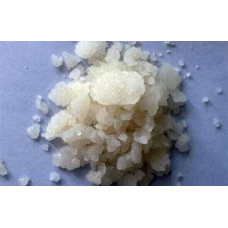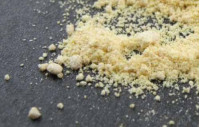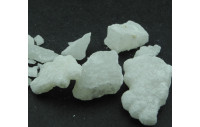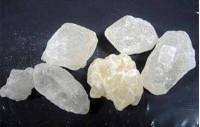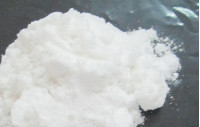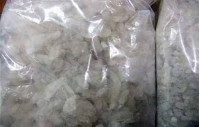
Buy 4F-MPH for sale online from USA vendor
Discount program: 5% OFF for the second order, 7% OFF for the third order.
Shop with us securely! We offer re-shipment guarantees.
We always provide new, legal products of impeccable quality.
Please make sure that the product is legal in your country and not under any restrictions before ordering.
We do not sell pharmaceutical products or controlled substances.
4f-MPH
4f-MPH, or 4-Fluoromethylphenidate, belongs to the phenidate class of stimulants. Structurally, it is closely related to methylphenidate (Ritalin), a medication used to treat attention deficit hyperactivity disorder (ADHD). The "4f" in its name refers to the fluorine atom in the para position of the molecule. This structural alteration gives rise to unique effects and potency compared to its predecessor.
The History
The exact origins of 4f-MPH are not well-documented, but it is believed to have emerged in the early 21st century as part of the expanding realm of research chemicals. These compounds are often developed to mimic the effects of controlled substances while evading legal regulations. 4f-MPH was likely synthesized as an attempt to explore the potential cognitive-enhancing properties of methylphenidate derivatives.
Effects
The effects of 4f-MPH are primarily stimulant in nature. Researchers and users have reported increased focus, alertness, and wakefulness after its consumption. It is often compared to its parent compound, methylphenidate, albeit with greater potency and a longer duration of action. However, like many research chemicals, the full scope of its effects is not well understood, and caution is advised when considering its use.
Dosage
Due to its high potency, 4f-MPH is often consumed in small doses. Oral ingestion is the most common method, with initial doses ranging from 5 to 10 milligrams. It's important to note that individual sensitivity can vary greatly, and a "less is more" approach is recommended. Users often titrate their dosage slowly to avoid overwhelming side effects. As with any research chemical, accurate measuring tools, such as milligram scales, are essential to ensure safe consumption.
Legal Status
The legal status of 4f-MPH varies from country to country. In many regions, it falls into a legal gray area due to its emergence as a research chemical after legislation was enacted to control more established substances. As such, its sale, possession, and use may not be explicitly regulated. However, staying informed about local laws and regulations is crucial to avoid legal complications.
Pharmacology
4f-MPH's mechanism of action closely mirrors that of methylphenidate. It primarily functions as a dopamine and norepinephrine reuptake inhibitor, leading to increased levels of these neurotransmitters in the brain. This results in heightened arousal, improved concentration, and enhanced cognitive function. The fluorine substitution likely influences its potency and duration of action, but further research is needed to fully elucidate its pharmacological profile.
Chemistry
Chemically, 4f-MPH shares similarities with other compounds in the phenidate family. Its molecular structure consists of a phenyl ring attached to a piperidine ring, with the addition of a fluorine atom in the para position. This subtle alteration can significantly impact interactions with neural receptors and enzymes, leading to the compound's distinct effects.
Trip Reports
Trip reports, often shared by individuals who have experimented with 4f-MPH, provide anecdotal insights into the compound's effects. These reports vary widely, with some users praising its ability to enhance productivity and cognitive performance. In contrast, others caution about potential side effects such as increased heart rate, restlessness, and difficulty sleeping. Individual reactions can vary with any substance, making it essential to approach such reports skeptically.
Conclusion
4f-MPH stands as a testament to the ever-evolving landscape of research chemicals. Its origins, effects, and potential benefits are still being explored, and its legal status remains uncertain in many jurisdictions. As interest in cognitive enhancement and novel experiences grows, compounds like 4f-MPH remind us of the complexities and responsibilities inherent in such explorations. Whether delving into its chemistry, understanding its pharmacology, or contemplating its effects, 4f-MPH continues to captivate the curious minds of researchers and enthusiasts alike. However, it's crucial to approach it with caution, respect for safety, and a commitment to responsible usage.
FAQ
What is 4-Fluoromethylphenidate (4F-MPH)?
4-Fluoromethylphenidate, often abbreviated as 4F-MPH, is a synthetic stimulant compound belonging to the substituted phenethylamine class. It is chemically related to methylphenidate, commonly known as Ritalin.
What are the common street names for 4F-MPH?
4F-MPH may be referred to by various street names, including "4F," "Fluoromethylphenidate," and "4-Fluoromethylmethylphenidate."
What is the legal status of 4F-MPH?
The legal status of 4F-MPH can vary from country to country and region to region. It is essential to research and understand the specific regulations and laws in your area before obtaining, possessing, or using 4F-MPH.
How is 4F-MPH typically used?
4F-MPH is often used as a research chemical and is not intended for human consumption. Some individuals may misuse it for its stimulant effects, but its safety and long-term effects on humans are not well-documented.
What are the potential effects of 4F-MPH?
The effects of 4F-MPH are similar to those of other stimulant drugs and may include increased alertness, focus, energy, and wakefulness. It can also lead to an increased heart rate, elevated blood pressure, and potential side effects such as anxiety, restlessness, and insomnia.
What are the risks associated with 4F-MPH use?
The use of 4F-MPH can be associated with various risks, including addiction, cardiovascular problems, and adverse psychological effects. It is essential to be aware of these risks and use the substance with caution, if at all.
Is 4F-MPH safe to use?
There is limited scientific research on the safety of 4F-MPH in humans. Due to its unregulated nature and potential risks, it is not recommended for use. Always prioritize safety and consult with a healthcare professional before using any substance.
Can 4F-MPH be used for medical purposes?
4F-MPH is not approved for medical use, and there are no established medical applications for this substance.
What should I do if I or someone I know is struggling with 4F-MPH misuse?
If you or someone you know is experiencing problems related to 4F-MPH use, seek help from a medical professional or addiction specialist. They can provide guidance on treatment and support options.
Where can I find more information about 4F-MPH?
It is essential to approach any information about 4F-MPH with caution and skepticism, as much of it may not be reliable. When seeking information, consult scientific sources and harm reduction organizations that focus on providing accurate and unbiased information related to substances like 4F-MPH.
Where to get 4F-MPH?
You can buy 4F-MPH from the best supplier at Flakkaforsale.online
To prepare the content, the following materials were used:
- FDA Substance Registration System
- Hazardous Substances Data Bank. National Library of Medicine. 28 August 2008. Retrieved 22 August 2014. 3,4-Methylenedioxymethamphetamine
- Liver transplant modulates gut microbial dysbiosis and cognitive function in cirrhosis. PDF . By HoChong Gilles, Scott C Matherly, Mohammed S Siddiqui, Puneet Puri...
- Differential impact of hyponatremia and hepatic encephalopathy on health-related quality of life and brain metabolite abnormalities in cirrhosis . By Jasmohan Bajaj
- An overview of alcohol and other drug issues
- Medicating the mind: a Kantian analysis of overprescribing psychoactive drugs B A Manninen
- The pharmacological basis of opioids Carla Ghelardini, Lorenzo Di Cesare Mannelli and Enrica Bianchi
- Ask Dr. Shulgin Online ARCHIVE: June 3, 2004
- Inhibition of plasma membrane monoamine transporters by β-ketoamphetamines. Nicholas V Cozzi, Michael KSievert, Alexander T Shulgin, Peyton JacobIII, Arnold Eruoho
- Schedules of Controlled Substances: Placement of Methylone Into Schedule I
- Bioanalysis of new designer drugs. Wohlfarth A, Weinmann W.
- New Psychoactive Substances (including synthetic cannabinoids, mephedrone, and more)
- Future Synthetic Drugs of Abuse. Donald A. Cooper. Drug Enforcement Administration McLean, Virginia
- Designer drugs: a medicinal chemistry perspective. F. Ivy Carroll Anita H. Lewin S. Wayne Mascarella Herbert H. Seltzman P. Anantha Reddy
- Synthetic cannabinoids in Europe
- Pharmacological Effects of MDMA in Man. By Enno Freye
- Drug Use in Relation to Outcome of Mammography Screening. von Euler-Chelpin M, Wu W, Vejborg and Lynge E
- DEA Drug Scheduling
- Electrophysiological Effects of Trace Amines on Mesencephalic Dopaminergic Neurons.Ada Ledonne, Nicola Berretta, Alessandro Davoli, Giada Ricciardo Rizzo, Giorgio Bernardi and Nicola Biagio Mercuri
- Electrophysiological evidence for a reciprocal interaction between amphetamine and cocaine-related drugs on rat midbrain dopaminergic neurons.Scarponi M, Bernardi G, Mercuri NB.
- Overdose of Drugs for Attention-Deficit Hyperactivity Disorder: Clinical Presentation, Mechanisms of Toxicity, and Management. Henry A. Spiller, author Hannah L. Hays Alfred Aleguas.
- Dose-dependent effectiveness of wheel running to attenuate cocaine-seeking: impact of sex and estrous cycle in rats. Peterson AB, Hivick DP, Lynch WJ.r.
- FDA Drug Safety Communication: Safety Review Update of Medications used to treat Attention-Deficit/Hyperactivity Disorder (ADHD) in children and young adults
- ADHD Medications and Risk of Serious Cardiovascular Events in Young and Middle-aged Adults
- Controlled Substances Act
- The Art of Drug Synthesis (Wiley Series on Drug Synthesis)
- Cannabis: domestic cultivation widespread
- A review of the influence of functional group modifications to the core scaffold of synthetic cathinones on drug pharmacokinetics

